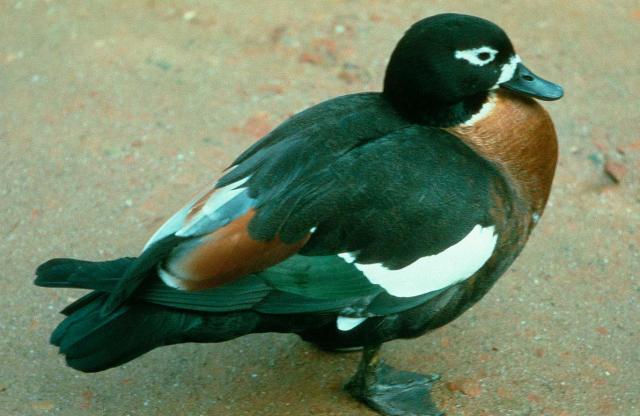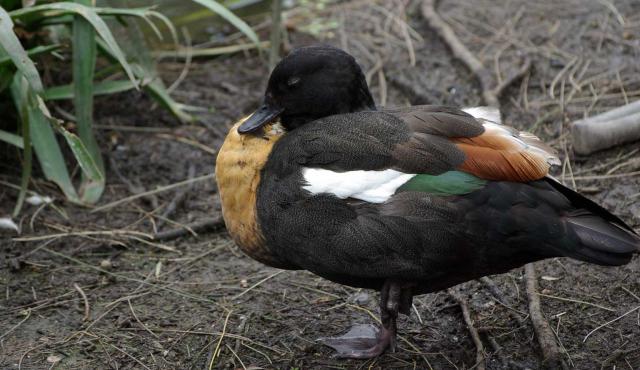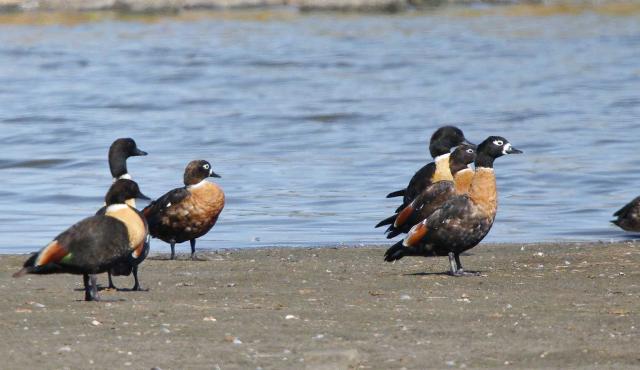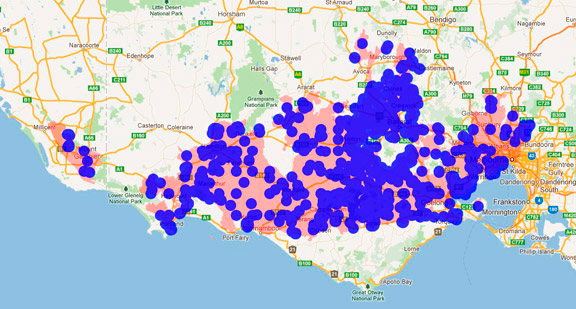A range of teacher professional learning programs will be developed to accompany the Biodiversity of the Western Volcanic Plains online outreach...



Australian Shelduck
Tadorna tadornoides
Breeds June-November. Often found in very large flocks. These disperse during late winter and monogamous pairs form and establish territories. Nests are built in tree hollows and occasionally down rabbit holes. Only the female incubates the eggs. Clutch size is between 5 and 14 and incubation is between 30 and 35 days.
| Details | Description |
| Type | Bird |
| Group | Duck |
| Other Common Names | Chestnut-breasted Shelduck, Mountain Duck |
| Identifying Characteristics | |
| Distinctive Markings | Upright stance and a dark head contrasting with a white neck ring in both males and females. |
| Diet | Omnivore. Feeds on pasture or aquatic vegetation. Also eats algae, insects and molluscs. |
| Habitat | Prefers freshwater habitats including lakes, estuaries, dams and flooded paddocks. Will frequent saltwater but this needs to be close to a supply of freshwater. |
| Native Status | Native to Australia |
| Sounds | Male produces a deep, harsh nasal buzzing grunt or honk. Females produce a high call, "ank - aank" or "anganker". |
| Taxonomy | |
| Phylum | Chordata |
| Class | Aves |
| Order | Anseriformes |
| Family | Anatidae |
| Genus | Tadorna |
| Species | tadornoides |

Distribution maps indicate current and historic locations where species have been sighted.
Source: Atlas of Living Australia
| Conservation Status | |
| DEPI Advisory List | Not listed |
| FFG Act | Not listed |
| EPBC Act | Not listed |
The conservation status of species is listed within Victoria and Australia.
The Department of Environment and Primary Industry (DEPI) Advisory List consists of non-statutory advisory lists of rare or threatened flora and fauna within Victoria.
The Flora and Fauna Guarantee Act 1988 (FFG Act) lists threatened species in Victoria. Under the Act, an Action Statement is produced for each listed species.
The Environment Protection and Biodiversity Conservation Act 1999 (EPBC Act) is the Australian Government’s key piece of environmental legislation, listing nationally threatened native species and ecological communities.



